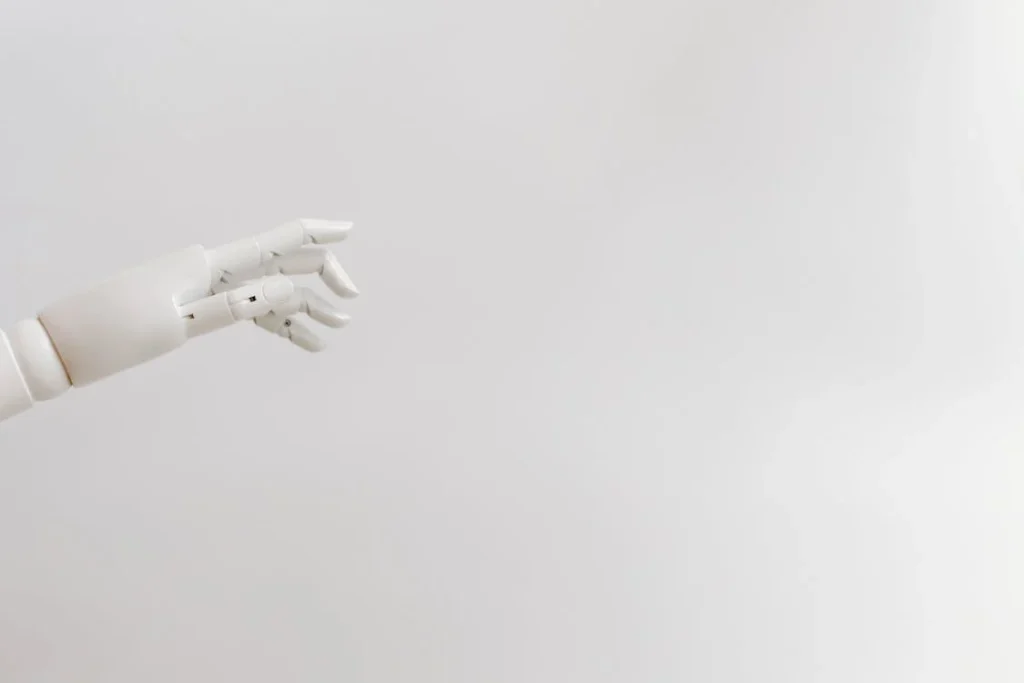Children with limb differences often face more than just physical challenges. They may struggle with confidence, movement, and feeling like they can do the same things as other kids. But technology is changing that, in ways that were almost impossible to imagine just a few years ago.
Today, prosthetic hands and arms for children are not just simple tools. With the help of artificial intelligence, they are becoming smart, responsive, and more like natural limbs. These new devices can learn, adapt, and even predict what the child wants to do—making everyday tasks easier and more natural.
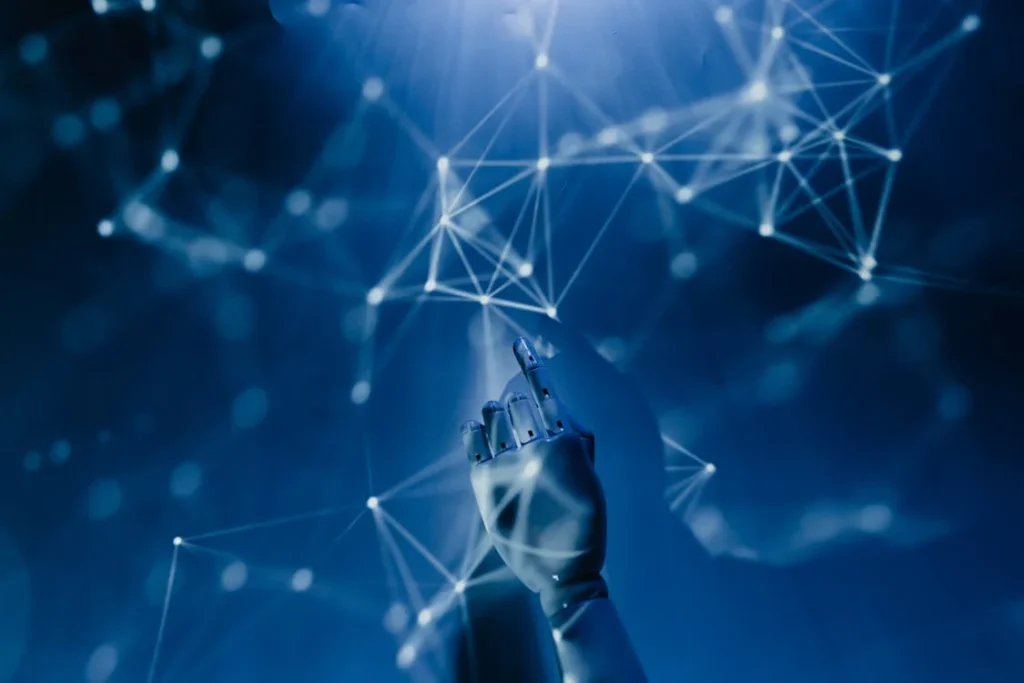
The Role of AI in Modern Pediatric Prosthetics
Understanding What AI Brings to the Table
Artificial Intelligence might sound like a futuristic concept, but it’s already becoming a quiet, powerful presence in pediatric prosthetic care. At its core, AI helps machines learn from data.
In the case of prosthetics, it allows the device to understand how a child moves, reacts, and uses their muscles, then responds in a way that feels natural.
For children who use upper-limb prosthetics, this means the device can become more than just a static tool. AI allows prosthetic hands and arms to recognize patterns—such as how the child tries to grasp an object or raise their arm—and adjust the response accordingly.
Over time, this creates a smoother, more intuitive connection between the child and the device.
The first time a child uses an AI-enabled prosthetic hand, it may take a little while for both the device and the child to understand each other. But with practice and repetition, the device starts to learn.
It adjusts grip strength, timing, and movement type based on real-time feedback from the child’s body. This is a huge step forward from traditional devices that use only mechanical or simple electronic responses.
These AI-supported changes don’t just improve movement—they build confidence. Children feel more in control, which helps them stay engaged in using the prosthetic regularly.
That’s one of the biggest challenges in pediatric prosthetics, and AI is helping solve it.
Making Movement Feel More Natural
One of the toughest hurdles in prosthetics is replicating the smooth, natural way that real limbs move. Human hands are incredibly complex.
They can gently hold a feather or firmly grip a ball. They respond in milliseconds. For prosthetic designers, the goal has always been to come as close as possible to this kind of range and speed.
AI helps bridge that gap by improving the way a prosthetic interprets muscle signals. Most modern prosthetics use sensors placed on the surface of the skin to detect when muscles are activated.
But without AI, the response is often basic. Press this muscle, open the hand. Press that one, close it. It works, but it can feel mechanical and slow.
With AI, these sensors send more detailed data. The software then looks for patterns in how the muscles behave during different actions.
Over time, it begins to predict what the child is trying to do—whether that’s picking up a small toy or reaching out for a glass. The more the child uses the device, the smarter it becomes.
This creates a more fluid experience. The prosthetic responds faster. Movements feel less forced.
Kids no longer have to think so hard about how to make the prosthetic work. It begins to feel like a natural extension of their own body, which is exactly the goal.
Supporting Growing Bodies and Changing Needs
Children grow fast. What fits today might not work six months from now. This constant growth has always been a challenge in pediatric prosthetic care.
A device that works well for a five-year-old might need major adjustments by the time they turn six or seven.
AI is now playing a role in helping prosthetics adapt to these changes more easily. By collecting data over time, AI algorithms can notice changes in how a child moves, how strong their signals are, or how their range of motion is shifting.
It can alert the care team that something needs to be adjusted—long before the child starts complaining of discomfort.
In some advanced systems, AI can even make small corrections automatically. For example, if the child is gripping objects with more strength than needed, the system can soften the grip over time.
If the muscle signals start to weaken due to growth-related changes, the prosthetic can learn to respond to smaller signals instead of requiring more force.
This type of real-time adaptation keeps the experience smoother and more consistent, even as the child’s body grows.
This kind of flexibility matters. Children who feel their prosthetic continues to support them—rather than slow them down—are much more likely to keep using it regularly.
That long-term use is what leads to real skill-building and independence.
Helping Children with Different Learning Styles
Not every child learns the same way. Some adapt to prosthetic devices quickly. Others take more time, especially if they’re dealing with sensory issues, fear, or low confidence.
Traditional training programs tend to follow a fixed routine, but AI is opening the door for more personalized learning.
Some prosthetic systems are now paired with mobile apps or training platforms that use AI to customize the learning journey for each child.
These programs track how the child interacts with their prosthetic—what exercises they complete, what movements they find hard, and how often they practice. Based on this data, the app can change the training program to suit the child’s pace and preferences.
If a child struggles with opening the hand smoothly, for example, the app may offer extra practice games that focus just on that skill.
If the child improves quickly, the program moves forward to more complex tasks. The result is a more engaging and encouraging training experience.
This is especially helpful for children with learning differences or those who get easily frustrated.
Rather than following a generic set of exercises, they can progress through a journey built just for them, supported by data and powered by AI.
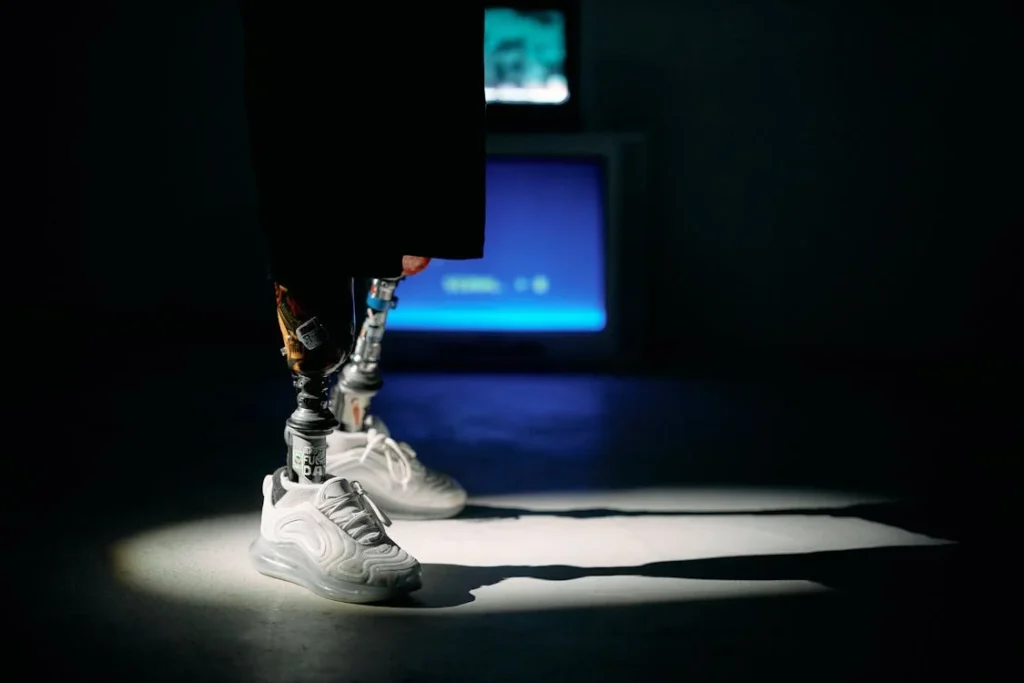
What the Future Holds: Smarter, More Intuitive Pediatric Prosthetics
Moving Beyond Muscle Signals
Right now, most AI-driven prosthetic arms and hands rely on muscle signals picked up from the surface of the skin. These signals work well, but they have their limits. They can be affected by sweat, skin movement, or incorrect placement of sensors.
That’s why researchers and developers are now exploring even more precise ways for prosthetics to connect with the body.
One promising direction is deeper signal mapping. This involves reading nerve patterns more directly, rather than just muscle signals. In the future, small sensors placed under the skin or near nerves might give prosthetic arms even more detailed instructions.
Combined with AI, these sensors could translate intention into movement with almost no delay at all.
This means that instead of simply opening or closing the hand, children might one day be able to move individual fingers, twist the wrist, or even feel pressure in the hand—all through a natural thought or impulse.
AI would act like the bridge between the body and the device, constantly learning and adjusting for better control.
These technologies are still being tested, but early results are encouraging. And as they become safer and more affordable, they could completely change what it means for a child to live with a prosthetic hand or arm.
The Promise of Sensory Feedback
Another area of research is focused on giving children a sense of touch through their prosthetic. Right now, most devices help with movement but can’t offer feedback.
A child can grip a toy or hold a pencil, but they can’t feel how tightly they’re squeezing it. This often leads to frustration or awkward movement.
AI is making it possible to start closing that gap. With pressure sensors placed in the fingers of the prosthetic, and smart software that interprets those signals, developers are working on systems that can send feedback to the child’s body.
It might come through small vibrations, temperature changes, or gentle signals on the skin. These signals tell the child if something is hard or soft, heavy or light.
Over time, this feedback becomes part of how the child learns to use the prosthetic with more skill and confidence. It allows for more natural control—something that was once considered impossible.
While sensory prosthetics are still in early stages for kids, the fact that AI can manage and process these complex signals makes the future look much more promising.
As these systems improve, they will open the door to a world where children with limb differences no longer have to guess how hard they’re holding something.
They’ll feel more in control, more connected, and more like the prosthetic is a real part of them.
Better Integration with Everyday Technology
The next generation of AI-powered pediatric prosthetics is expected to work more smoothly with the digital world. As smart homes, tablets, and wearable tech become more common, prosthetics are beginning to connect with them.
For example, some AI prosthetics can already link to mobile apps that track movement, provide feedback, or let kids control features through their phone.
Future devices may go even further—syncing with school tools, helping with physical therapy through interactive games, or adjusting settings based on the environment.
Imagine a child’s prosthetic hand automatically softening its grip when holding a delicate object or tightening slightly when playing catch. Or the device recognizing when the child is tired and offering easier control.
These adjustments, powered by AI and supported by smart sensors, could happen in the background without the child needing to do anything.
It’s also likely that prosthetics will become easier to update through software changes. This means improvements in performance can be delivered without needing a new device—making it easier and cheaper for families to keep up with their child’s changing needs.
Making AI Prosthetics More Affordable and Available
One of the most important parts of this future is making sure that all these advanced tools are not just for a few. AI has the potential to simplify prosthetic systems in a way that reduces cost.
Instead of requiring expensive custom electronics or imported parts, developers are working to create smarter, more efficient AI tools that can be integrated into locally made prosthetics.
This is especially important in places like India, where many families struggle with the cost or availability of high-tech options.
If AI tools can make prosthetics smarter without making them more expensive, then more children will benefit.
Open-source platforms and shared research also help speed up innovation and bring down costs.
Companies, research labs, and non-profits are beginning to collaborate more than ever before, sharing knowledge that leads to better designs and smarter systems for everyone.
The hope is that as AI continues to improve and become more accessible, it won’t just lead to better devices—it will lead to a future where no child is left out because of where they live or how much their family can afford.
A More Inclusive and Empowered Future
The evolution of pediatric prosthetics through AI is not just about technology. It’s about dignity, inclusion, and opportunity. Children with limb differences don’t want to be seen as different.
They want to play, learn, and explore like anyone else. AI helps remove the barriers that get in the way.
By making devices that respond faster, feel more natural, and adapt to the user, AI gives children more freedom to be themselves. It allows them to build skills, explore their interests, and grow with confidence.
Just as importantly, it shows them—and the world—that they are not limited by what they were born with or what they lost.
They are capable of doing extraordinary things with the right support, the right tools, and the right mindset.
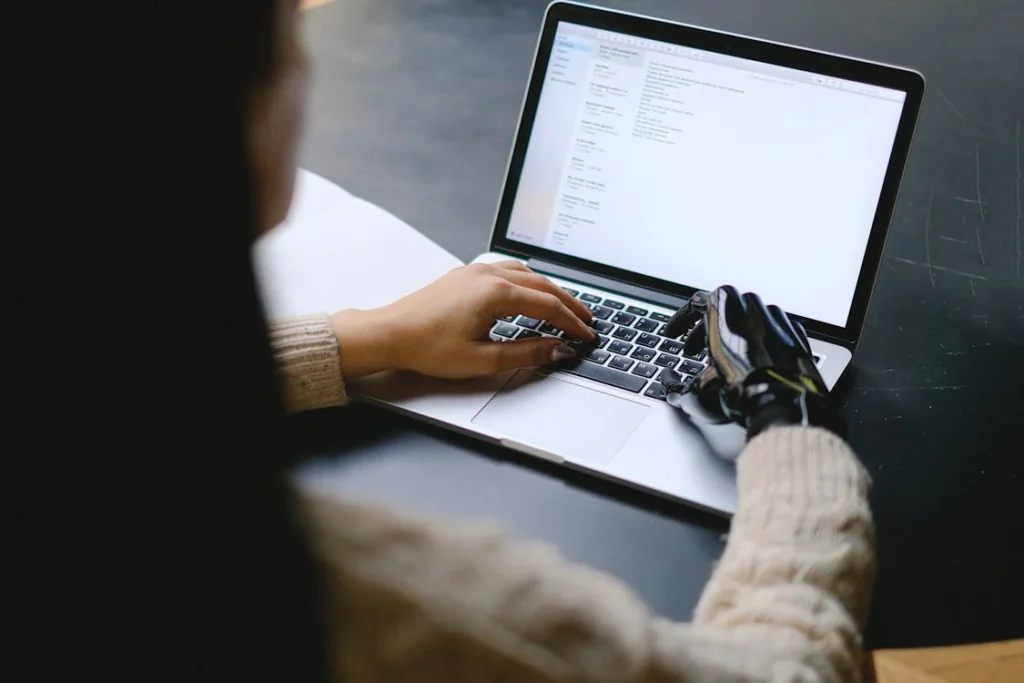
Data: The Invisible Force Behind Smarter Prosthetic Hands and Arms
Where the Data Comes From
Every time a child uses an AI-enabled prosthetic hand or arm, small bits of information are created. These might include how often the hand is opened and closed, how strong a grip is, how long a movement takes, or even how the child moves during different times of day.
This is called usage data, and it’s a key ingredient in how AI makes decisions inside the prosthetic.
In simple terms, data is like memory. It helps the prosthetic “remember” what worked well and what didn’t. For example, if the AI notices that a child struggles to lift a cup every morning but manages fine in the afternoon, it may adjust the grip strength or timing for that specific task.
If it detects slow response when the child is tired, it may reduce sensitivity to avoid misfires.
The more the prosthetic is used, the more data it gathers. Over time, this gives the AI a clear picture of the child’s patterns, preferences, and habits.
From there, the prosthetic can respond faster, adjust on its own, and even help predict the best settings for future use.
Turning Data into Better Functionality
Raw data by itself isn’t helpful unless it’s processed and interpreted. That’s where AI algorithms come in. These are software programs designed to look at the data, understand what it means, and use it to make smart decisions.
In pediatric prosthetics, this might mean changing how fingers move, adjusting the angle of the wrist, or recognizing new movement signals.
The AI may also learn to ignore false signals—like those caused by a child shifting in their seat or brushing against something by accident. By filtering out noise and focusing only on useful data, the device becomes more stable and accurate.
Some systems even allow this data to be shared—with permission—between the prosthetic, therapists, and developers. This allows updates and improvements to be based not just on guesses or lab testing, but on real-life use from real children.
For instance, if several children are having trouble with a specific movement, the developers can create a global update that fixes the issue for everyone.
This is a major shift from how prosthetics were designed in the past. Before AI, updates were rare and slow. Now, thanks to smart data use, devices are improving faster, more often, and with real-world feedback.
Privacy and Responsibility in Data Use
When it comes to children, data collection must be handled with care. Even if the goal is to improve function, privacy is still a major concern.
Families need to know that the data being collected from their child’s prosthetic is protected, secure, and used responsibly.
Most AI prosthetics today collect anonymized data. This means the information is stripped of personal details before being analyzed or shared.
Parents usually have the option to control what kind of data is collected and who can see it. There are also clear rules about how long the data is stored and how it can be used.
In the future, we may see more tools that let families view their own data in simple dashboards. This could help parents understand how their child is using the prosthetic, spot patterns, and track progress over time.
Some systems already offer weekly reports or app-based insights that summarize things like grip frequency, activity levels, or common usage times.
These tools give families more control and help them be active partners in their child’s prosthetic journey.
But it’s also important for developers and companies to stay transparent and build trust by explaining how data is used and how it helps.
Making Smarter Prosthetics Through Shared Learning
One of the most exciting parts of AI and data in prosthetics is the idea of shared learning. When one child’s prosthetic learns something helpful—like how to improve grip for a tricky task—that insight can be used to improve prosthetics for other children too.
This is called collective learning, and it’s possible when anonymized data is shared across a network of users. AI systems can learn from hundreds or thousands of different use cases and create better software updates that benefit everyone.
This is especially useful in pediatric prosthetics, where children have such different needs, body sizes, and activity levels.
Instead of building one-size-fits-all solutions, developers can now create smarter tools that adapt to real-world diversity.
Children who play sports, draw, or use sign language might all have different demands from their prosthetic, and AI trained on shared data can support those unique experiences.
This approach also makes it easier to design for inclusivity. For example, insights from children with limb differences in different parts of the world—urban and rural, wealthy and low-income—can all feed into one shared system.
The result is a prosthetic that reflects a wide range of needs, not just one specific user type.
Laying the Foundation for Lifelong Support
As children grow, their needs change. The data collected from their prosthetic use in early years can become a foundation for lifelong support.
For instance, a teenager who has used an AI prosthetic since childhood may one day need a more advanced device for college, work, or sport.
Having years of past data helps future devices sync more quickly with how their body moves and how their brain controls motion.
This continuity is one of the most exciting potentials of AI-powered prosthetics. Instead of starting over with each new device, children can build a profile over time.
Their prosthetic journey becomes a story of progress, not constant restarts.
Developers are now thinking ahead—building AI systems that evolve not just with devices but with people.
These systems may one day carry user history across different prosthetics, providers, and even countries, giving users a consistent and personalized experience for life.
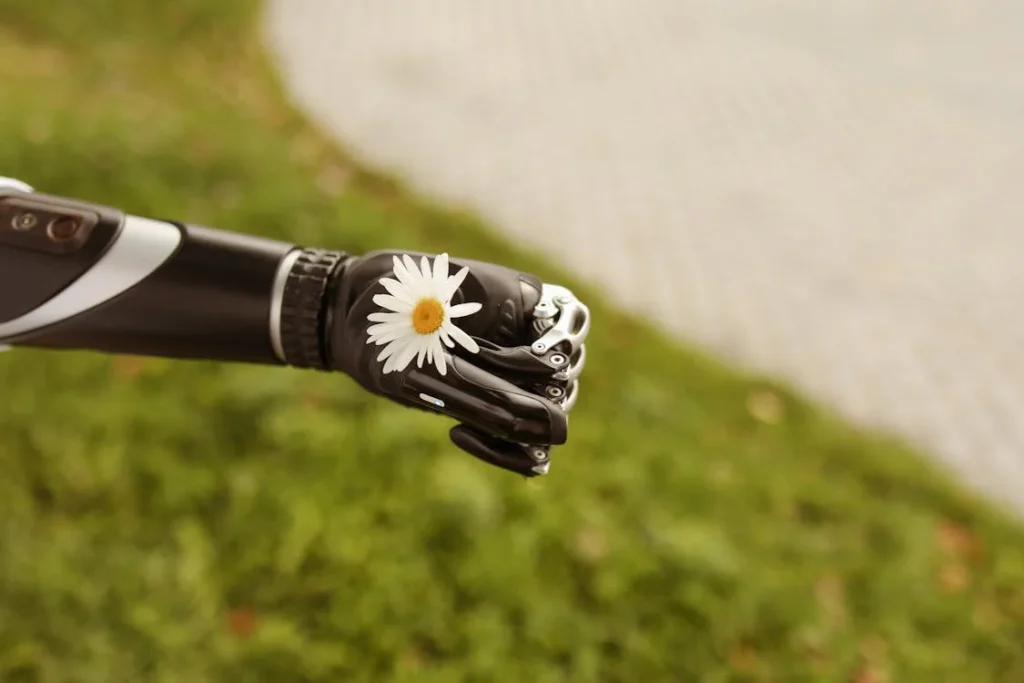
Emotional Growth and Confidence: The Psychological Impact of AI in Pediatric Prosthetics
Restoring a Sense of Wholeness
Children notice differences early. When a child is born without a hand or loses one due to injury or illness, they may begin to feel separate from their peers.
As they grow older, especially in social environments like school, they become more aware of how others perceive them. This awareness can lead to self-doubt, hesitation, or even withdrawal.
Traditional prosthetics, while helpful, have often failed to restore this sense of wholeness. They may function adequately but feel awkward, look noticeably artificial, or require too much effort to use.
Children might stop using them altogether, not because they don’t need help, but because the device doesn’t feel like a part of them.
AI is beginning to shift that experience. Smarter, responsive prosthetics that move more naturally help reduce the “otherness” a child might feel.
When a child can move their fingers, control their grip, or respond quickly to a situation, they feel more in tune with their body. This subtle sense of control builds inner strength. It helps restore not just movement, but identity.
Children start to feel like they are in charge of their world again. They are no longer working around a missing limb—they are adapting and growing with a new kind of ability.
Encouraging Independence and Exploration
One of the most important milestones in childhood is learning how to be independent. Simple tasks like tying shoelaces, opening a lunchbox, drawing, or buttoning a shirt help children build confidence.
Without the right support, kids with limb differences may rely too heavily on adults or avoid trying new things out of fear of failure.
AI-powered prosthetics gently push those limits by offering feedback, learning patterns, and responding faster to what the child wants to do. When a child tries to hold something and the prosthetic adjusts in real time to make it easier, it reduces frustration.
These small successes add up. A child who once needed help putting on a school bag may now be doing it independently. That kind of moment stays with them.
Over time, this independence turns into curiosity. Children begin to test what else they can do. They explore games, crafts, and challenges with a renewed sense of energy.
This is especially important in emotional development. Kids who feel capable are more likely to speak up, take initiative, and feel comfortable in group settings.
These changes are hard to measure with numbers, but they are often the most powerful outcomes of advanced prosthetics.
Reducing Anxiety Around Social Interactions
School, playgroups, and public settings can be tough for children who use prosthetics. There’s often a fear of being stared at, asked too many questions, or being seen as “different.”
In many cases, children end up avoiding situations where they might feel exposed.
AI-enhanced prosthetics can’t erase those social pressures entirely, but they do help by making the device more fluid and less of a barrier.
When a prosthetic reacts smoothly, with more lifelike movement, children feel less worried about drawing unwanted attention. Some even begin to take pride in their device, showing others how it works and explaining how they control it.
This shift from hiding to sharing is a major emotional step. It replaces shame with confidence.
Children who once covered their hand with long sleeves might now pick out colors for their prosthetic or proudly wear a short-sleeved shirt. They feel more in control of the narrative.
Parents and teachers often notice these changes first. A child who once stayed quiet during group activities may suddenly volunteer.
One who hesitated to make new friends might become more outgoing. These are signs that the child is starting to accept—and even celebrate—their identity.
Building Emotional Resilience Through Technology
Resilience is the ability to bounce back after difficulties. For children with limb differences, building resilience is an essential part of growing up.
Every missed movement, every frustrated attempt to grasp an object, is an opportunity to either give up or try again. AI plays an unexpected but important role here by reducing the number of those painful failures.
Because AI learns from mistakes and adapts over time, it helps reduce the frustration that can come from repeated errors.
A child might struggle with a particular task for a few days, but then notice it’s getting easier—not because they changed, but because the prosthetic learned. This back-and-forth creates a sense of teamwork between the child and their device.
Instead of feeling like the prosthetic is a problem to manage, the child begins to see it as something that grows with them.
This shared progress is deeply empowering. It gives children a sense of perseverance. When they fall short one day, they know it will be easier the next.
That mindset extends beyond the prosthetic. Children become more willing to take on other challenges in life, knowing that effort and time lead to growth.
Creating a Sense of Control in a World That Often Feels Unfair
Many children with limb differences struggle with the sense that something has been taken from them. Whether it’s the result of an accident or a condition present at birth, there’s often a quiet feeling of unfairness. Why me? Why can’t I do what others do?
AI-powered prosthetics don’t take away that feeling entirely, but they offer something in return—control.
Control over their environment. Control over their actions. Control over how they choose to live and move and play.
When children feel that they have options and agency, their emotional state shifts. They begin to focus more on what they can do than what they can’t. They make choices. They express preferences.
They ask for improvements and try new settings. All of this builds not just confidence, but also identity. The prosthetic becomes part of who they are, not something separate or unwanted.
That psychological acceptance is just as important as physical adaptation. It marks the moment when the prosthetic stops being a reminder of loss and becomes a tool of expression, ability, and pride.
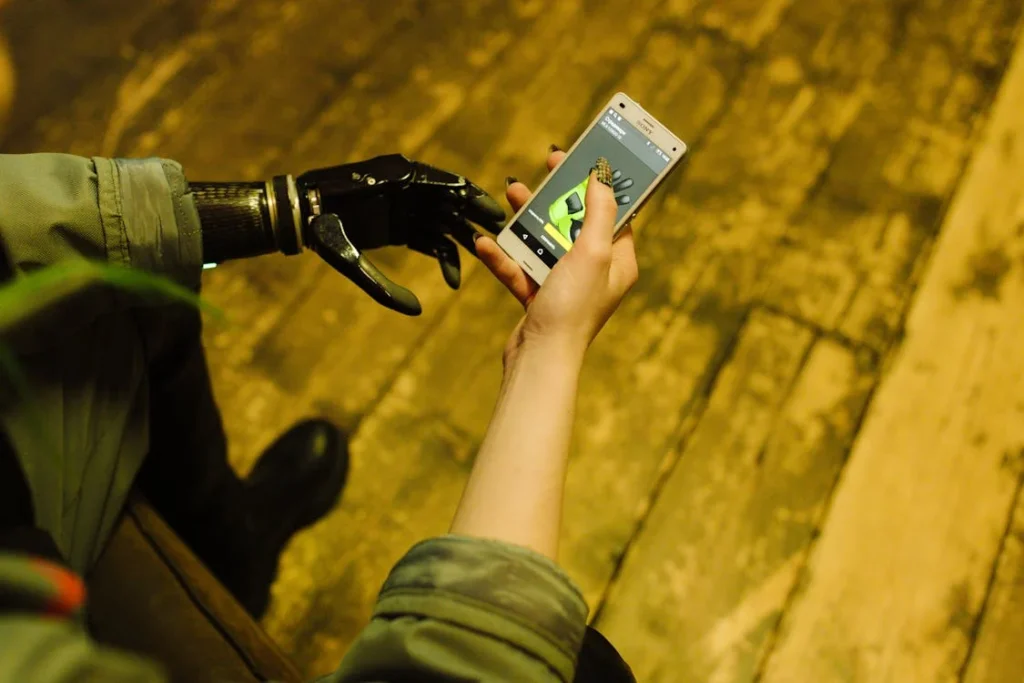
Collaboration Behind the Innovation: How Different Fields Are Shaping AI in Pediatric Prosthetics
No Single Expert Can Do It Alone
The development of AI-driven prosthetics for children is not just about smarter software or better sensors. It’s about how different types of knowledge come together to create something meaningful, practical, and child-friendly.
Engineers may design the electronics, but without input from pediatricians, therapists, or even the families of users, the final product often misses the mark.
In pediatric care, every decision must account for the growing body, the emotional needs of the child, the daily habits of a young learner, and the expectations of caregivers.
Engineers alone cannot anticipate all these layers. That’s why collaboration is at the core of progress in this space.
Prosthetic devices that truly help children are often born from conversations—between doctors who understand limb differences, therapists who know how kids adapt, and data scientists who build AI models.
These perspectives combine to make sure the device is not only functional but also usable, safe, and supportive of the child’s growth.
AI systems in prosthetics need human context to work well. They need insights from many disciplines to understand what success looks like—not just in a lab, but in a child’s real life.
Engineers and Designers Bringing Imagination to Reality
At the foundation of any AI prosthetic is hardware—the limb itself, its motors, sensors, joints, and overall design. Engineers work to make these parts light, strong, and responsive.
But design for children requires something more than technical skill. It demands a sense of empathy.
Children are not miniature adults. Their hands are smaller, their energy levels are higher, and their movements are unpredictable. Devices built for them must be adaptable, fun, and non-intimidating.
That’s where industrial designers and user experience experts come in. They shape the look, feel, and fit of the prosthetic so that it becomes something a child wants to wear—not something they are forced to use.
In AI development, this partnership continues through testing. Engineers might develop a smart grip system, but it takes repeated trials with real children, along with feedback from therapists and parents, to fine-tune how the system responds in everyday use.
This back-and-forth process turns prototypes into products, and abstract ideas into helpful tools.
Medical Professionals Guiding Safe and Effective Use
Pediatricians and orthopedic specialists are essential in guiding when and how a child should be introduced to an AI-powered prosthetic. They evaluate the child’s readiness—not just physically, but mentally and emotionally.
Some children may need more time before being fitted with a functional limb, while others may benefit from early intervention.
Doctors also keep track of health changes that can affect prosthetic use, such as growth spurts, skin conditions, or changes in muscle tone. Their input is crucial when deciding how often to update a prosthetic or when to adjust its settings.
Rehabilitation specialists, including occupational and physical therapists, also play a central role. They guide children through learning how to use the prosthetic, helping them build the muscle memory and confidence to perform everyday tasks.
Their close work with the child offers valuable feedback to the development team—feedback that can’t be seen just by watching movement alone.
When therapists notice hesitation, fatigue, or confusion, they share that information with AI trainers or prosthetic makers, leading to better-tuned responses in the next version of the software or hardware.
AI Experts Learning from Human Behavior
Data scientists and AI developers often come from fields like robotics or computer science, but when working in pediatric prosthetics, they must adjust their thinking.
Instead of trying to maximize output or speed, they focus on something more human—learning how children behave, adapt, and interact with their environment.
This requires a shift in approach. AI developers must think more like behavioral observers.
They must understand that each child’s use of a prosthetic will look different, and that success may mean small, quiet improvements—not dramatic, instant changes.
By working closely with therapists, teachers, and caregivers, AI teams learn what movements matter most and how children express frustration, curiosity, or fatigue.
They also begin to see how learning styles vary. Some children need frequent feedback. Others need calm and space. These insights shape how AI models respond to new users and adjust over time.
In the most advanced research teams, AI experts even co-create their training models with input from rehabilitation specialists.
Together, they build smarter algorithms grounded not just in numbers, but in lived experience.
Children and Families as Active Collaborators
Perhaps the most important voices in this collaboration come from the children and their families. No one knows the reality of living with a prosthetic better than the person wearing it every day.
Children offer clear, honest feedback—sometimes in words, often through their actions.
A child may not explain why a grip feels too tight, but they might stop using the prosthetic. They might avoid a specific task. These small cues are powerful indicators that something isn’t quite right.
Families also notice patterns that others might miss. They see how the child responds at different times of day, how they react emotionally to using the prosthetic, and how it affects their social life.
Parents often share important stories that help researchers, developers, and therapists improve the next generation of devices.
Today, more teams are inviting families into the design process earlier. Children test prototypes, share what colors they like, what feels too heavy, or what sounds too robotic. This feedback helps ensure the end product is not only effective, but also embraced.
This kind of inclusion doesn’t just improve the prosthetic—it empowers the child. When they see themselves as part of the creation process, they take ownership of their device. It becomes something they helped shape, not just something they were given.
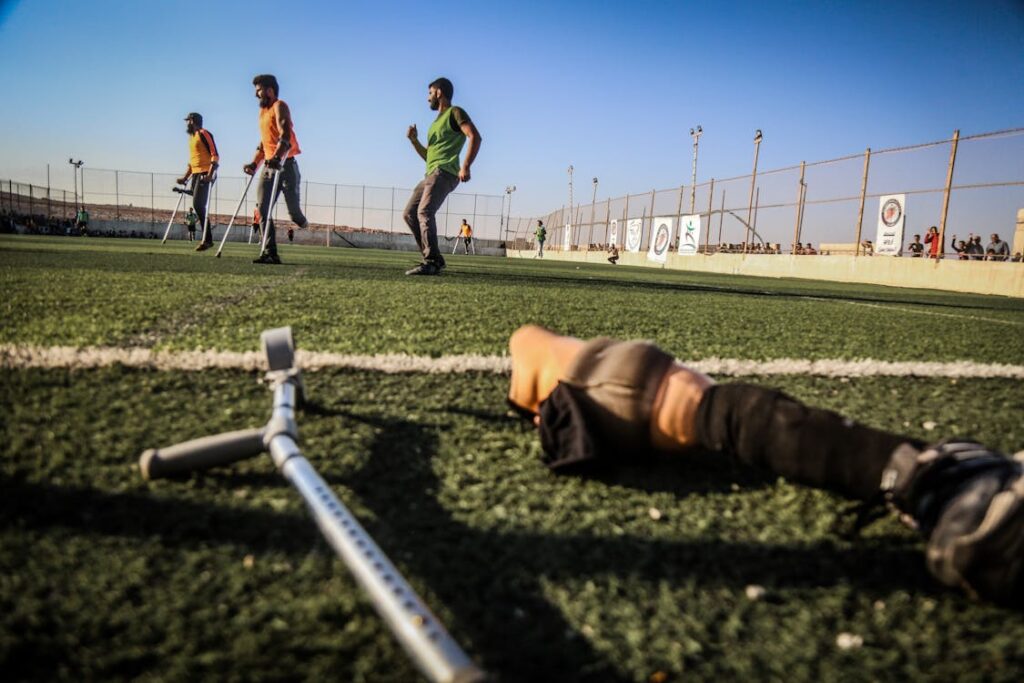
Culture, Community, and Context: The Social Lens of Pediatric AI Prosthetics
Why Local Context Matters More Than We Think
Prosthetic devices are often designed in labs far removed from the lives of the people who will use them. In many cases, this leads to tools that are technologically advanced but culturally mismatched.
A device that works beautifully in a clinic may fall short in a child’s real-world setting—not because it lacks features, but because it doesn’t fit into the rhythm of their daily life.
For children, this disconnect can be even greater. A prosthetic hand that’s too delicate for a rough-and-tumble schoolyard in a rural town, or too bright in a community that values modesty, may simply be left unused.
Even an AI feature meant to help can seem strange or intimidating if not introduced the right way.
Understanding the culture in which a child is raised—how they play, communicate, dress, or attend school—plays a major role in whether they embrace their prosthetic or avoid it.
Designers and developers who listen to these cultural cues are more likely to create tools that feel natural, not foreign.
This is especially true in diverse countries, where what works in one region may not work in another. Language, climate, family roles, and access to electricity or internet—all shape the way a child can realistically interact with an AI-powered device.
The Influence of Social Acceptance and Visibility
Children often learn how to feel about themselves by watching how others react to them. In some communities, wearing a visible prosthetic may be met with curiosity and support.
In others, it may carry stigma or unwanted attention. These social dynamics affect whether a child feels confident wearing their device in public.
AI-powered prosthetics, with their advanced features and modern appearance, can sometimes draw even more attention.
While some children enjoy explaining how their bionic hand works or showing off its functions, others may feel overwhelmed by questions or uncomfortable with the spotlight.
In such cases, discreet design options or subtle movements matter. AI doesn’t have to be flashy to be effective.
When it’s built with sensitivity to how the child sees themselves and wants to be seen, it can become a quiet ally instead of a loud statement.
Community education also plays a role. When neighbors, classmates, and teachers understand what the prosthetic is and why it matters, children are more likely to feel supported.
They are less likely to be singled out or made to feel different.
Building inclusive attitudes takes time, but it often starts with exposure. School programs, peer storytelling, or even short demonstrations help demystify AI prosthetics, allowing the community to see the person before the device.
Adapting AI for Different Lifestyles and Environments
Children grow up in vastly different settings. A child in a busy city may use a prosthetic in a classroom, while a child in a farming village may be climbing trees or helping with chores.
These differences in lifestyle change how a prosthetic is used—and what it needs to withstand.
AI-enabled devices can and should be trained for these varying environments. For instance, a child who frequently plays on uneven ground may benefit from different grip responses or more rugged hardware.
One who often carries objects like water bottles or bags might need adjusted grip strength or more durable components.
This is where localized data becomes powerful. The more AI systems are exposed to diverse users and environments, the smarter they become at recognizing different use patterns.
Developers can feed in data from varied regions to make the prosthetic better suited to those specific needs.
Even small details matter. In areas with regular power cuts or limited access to charging, devices that rely heavily on constant power may not be practical.
AI systems that are energy-efficient or have offline functionality become essential.
The goal isn’t just to build high-tech tools. It’s to build high-tech tools that fit into real lives, no matter where those lives happen to be.
The Role of Traditional Beliefs and Family Dynamics
In many cultures, family plays a central role in decision-making—especially for children. Parents, grandparents, or community elders may influence whether a child receives or uses a prosthetic at all.
Their beliefs about disability, technology, or medical care often shape how the device is introduced and accepted.
Some families may hesitate to adopt AI-driven prosthetics due to a lack of understanding or concerns about safety.
Others may fear that the device could make their child feel more different, not less. Addressing these fears with respect and patience is essential.
Healthcare workers and prosthetic teams must approach these conversations with cultural awareness.
Explaining how the device works, showing real-world examples, and including the family in the process from the start often leads to better outcomes.
AI can also support cultural sensitivity. For example, app interfaces or training programs that use local languages, child-friendly symbols, and familiar scenarios help children feel more comfortable.
Even voice feedback in a local accent or tone can make a difference in how approachable the system feels.
Prosthetics should never feel imposed. When families feel heard and respected, they’re more likely to support consistent use and long-term adaptation.
Creating Culturally Informed Solutions
The future of pediatric prosthetics depends not only on smart algorithms, but on culturally informed design. This means involving local voices in research, testing, and development.
It means building partnerships with schools, NGOs, clinics, and families to understand what success looks like from their point of view.
When AI is developed with these voices in mind, the result is not just a more useful device—it’s a more human one. A tool that fits not just the child’s hand, but their life.
As global interest in AI prosthetics grows, the most meaningful progress may come not from trying to make a universal solution, but from creating many small, thoughtful ones that reflect the diversity of children’s experiences around the world.
Conclusion
AI is reshaping pediatric prosthetic hands and arms—not just by making them smarter, but by making them more human. These devices are learning to move with children, grow with them, and support their unique journeys. From responsive grip control to personalized training and culturally sensitive design, AI is quietly helping children feel more capable, more independent, and more connected to the world around them.
But the real impact goes beyond technology. It lives in the quiet confidence of a child tying their shoelaces, drawing a picture, or holding a friend’s hand without hesitation. That’s the future AI in prosthetics is building—not just better movement, but better moments.
As this field continues to grow, the most powerful innovations will be those that listen closely to the needs of children, families, and communities—and build with empathy, simplicity, and purpose.



